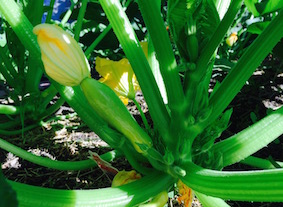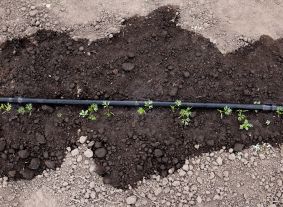Preventing Squash Vine Borer
Views: 7009

Squash vine borer is on my Top 5 garden pests. It’s not a Top 5 list in a good way; it’s a totally bad list to be on. I’ve written about them before and the fight against these critters will continue indefinitely.
In short, this garden pest does exactly what the name says. Adult forms of the pest lay eggs on the young stem at ground level. The eggs develop into larva, then they bore through the squash vine. Once inside, they chew their way through the stem, sight unseen. Unless you are really looking for it, you won’t know anything is happening to your squash until it starts to wilt. Why does it wilt? The nutrient pathways are being eaten up by the pest until nothing—not even water—can pass. Harsh way to die.
3 ways to prevent squash vine borer
So, what to do? I’ve read up on this and there are a few options.
1. Plant your young squash plants in ground that didn’t have squash on it the previous year. Then cover your plants with a light fabric row cover. This will prevent the adults from laying eggs. Around July or so, the row covers can be removed. If planting in ground that previously had squash vine borer, then the adults will emerge from the ground and be trapped inside. Not a good idea.
2. In a small community garden plot, finding ground that wasn’t near squash the previous year may be a difficult thing. Instead try a weekly application of insecticidal soap sprayed onto the stems at the plant’s base. It won’t prevent the eggs from being laid. However, it will kill (via smothering) any eggs that are laid. The point is to catch the eggs before they develop enough to bore through and then into the stem.
3. Rub each stem with a damp cloth every five to seven days. Pretty simple to do, depending on how many squash plants you have.
No matter what option you employ, be vigilant. Look at your stems and see if you can spot the pile of yellow-green “poop.” It actually looks like saw dust piled up after drilling a hole. That means a larva is likely inside. But all is not lost. You can carefully cut a small opening into the hollow stem to find and eradicate the white and squishy larva. Once you open the hole, cover it with a pile of fresh compost to prevent anyone else (typically ants) from crawling inside.
Meet Ellen Wells
When you’re raised on a farm, you can’t help but know a thing or two about gardening. Ellen Wells is our expert on edible gardening.…
Ellen's Recent Posts

Asparagus






